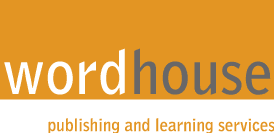Teaching and learning can be tricky tasks to cross once you've covered the basics. Here are some helpful handbooks on the following areas:
- teaching
- training
- open & distance learning
- elearning
- instructional design
- learning needs analysis
- professional development
- writing textbooks.
Feel free to click on the book of your choice to direct you to their Amazon page. |
|
|
|
John Hattie
2011 | Routledge
In November 2008, John Hattie’s ground-breaking book Visible Learning synthesised the results of more than fifteen years research involving millions of students and represented the biggest ever collection of evidence-based research into what actually works in schools to improve learning. Visible Learning for Teachers takes the next step and brings those ground breaking concepts to a completely new audience. Written for students, pre-service and in-service teachers, it explains how to apply the principles of Visible Learning to any classroom anywhere in the world. The author offers concise and user-friendly summaries of the most successful interventions and offers practical step-by-step guidance to the successful implementation of visible learning and visible teaching in the classroom. |
|
|
Phil Beadle
2010 | Crown House Publishing
The ultimate (and ultimately irreverent) look at what you should be doing in your classroom if you want to be the best teacher you can possibly be. How to Teach is the most exciting, most readable, and most useful teaching manual ever written. It is not the work of a dry theorist. Its author has spent half a lifetime working with inner city kids and has helped them to discover an entirely new view of themselves. This book lets you into the tricks of the trade that will help you to do the same, from the minutiae of how to manage difficult classes through to exactly what you should be looking for when you mark their work. How to Teach covers everything you need to know in order to be the best teacher you can possibly be. |
|
|
Margaret Anne Reid, Harry Barrington and Mary Brown
2004 | Chartered Institute of Personnel and Development
Acclaimed on publication as
‘the most comprehensive British analysis of training philosophies, approaches,
methods and their underlying historical context currently available in print’,
successive editions of Training Interventions have ensured ‘it remains a
definitive text’ on training in the UK. For the seventh edition, the new
co-authors have revised and updated the text to take account of the growing
emphasis on interactive learning, online learning and other recent
developments. The new edition also adopts a more accessible and student
friendly approach, with case material, examples, activities and questions to
aid student learning. |
|
|
Malcolm Martin, Fiona Whiting and Tricia Jackson
2010| Chartered Institute of Personnel and Development
This is the only text
designed specifically for the new CIPD Certificate in HR Practice. New to
this edition: three new chapters on job analysis and design, reward
systems and change management; more on customer service skills; more on
employment law; more examples of real-life practice; online resources. |
|
|
John Arnold, Ray Randall, Fiona Patterson, Joanne Silvester, Ivan Robertson and Carey Cooper
2010 | Pearson
The fifth edition of this
market-leading textbook retains its popular blend of theory, research and
examples. Substantially revised and updated with extensive new material that
reflects contemporary research and debate, the book offers an accessible and
fascinating examination of human behaviour in today’s workplace. Covering a
broad range of core topics, the book is suitable for undergraduate students in
business, management, and psychology as well as those studying for professional
qualifications. |
|
|
Andrea Hope and Patrick Guiton
2005 | Routledge
Adaptability and the ability to handle rapid and
ongoing change are essential for successfully managing any modern educational
enterprise, and open and distance learning is no exception. In an often
over-looked field, this volume examines the nature of sustainability in open
and distance learning using case material from a wide range of current
educational contexts worldwide. The books themes include: reflection and
analysis of the management of change, collaboration, staff development, quality
assurance and funding in an increasingly globalized environment. |
|
|
Beatriz Fainholc
2011 | Nova Publishers
This book explores and
identifies, from the perspective of distance education with the use of ICT,
theoretical-practical contributions for an educational, phenomenological,
critical, and contextualised practice, in order to analyse and understand the
new phenomena of the electronic online tele-educational modalities that have
reached their peak in the twenty-first century. |
|
|
Richard Andrews and Caroline Haythornethwaite
2007 | SAGE Publications
This handbook provides a
state-of-the-art, in-depth account of research in the rapidly expanding field
of E-learning. The first of its kind, it provides reviews of over 20 areas in
E-learning research by experts in the field, and provides a critical account of
the best work to date. The contributors cover the basics of the discipline, as
well as new theoretical perspectives. |
|
|
Ruth Clark and Richard Mayer
2011 | Wiley
Thoroughly revised and
updated, this third edition of the best–selling book offers a comprehensive
review of multimedia learning for both users and designers. The book contains
design principles that are written to increase learning while debunking many
popular theories about good design. The book also contains the most current
research and includes new topics (e–learning for educators, new delivery
technologies, social media, and more) and offers helpful guidelines. The book’s
many examples: create working multimedia that inform the research guidelines;
have been update to include real–world screen captures; extend principles to
illustrate their application to synchronous e–learning tools.
|
|
|
William Horton
2011 | Wiley
Since the first edition of E–learning by
Design, e–learning has evolved rapidly and fringe techniques have moved into
the mainstream. Underlying and underwriting these changes in e–learning are
advances in technology and changes in society. The second edition of the
bestselling book E–Learning by Design offers a comprehensive look at the
concepts and processes of developing, creating, and implementing a successful
e–learning program. This practical, down–to–earth resource is filled with clear
information and instruction without over simplification. The book helps
instructors build customized e–learning programs from scratch—building on core
principles of instructional design to: develop meaningful activities and
lessons; create and administer online tests and assessments; design learning
games and simulations; and implement an individualized program. "Every
newcomer to the field will find this edition indispensable, while professionals
will find much needed contemporary information to manage the rapid changes
happening in our field. |
|
|
Robert Reiser and John Dempsey
2011 | Pearson
Written by the leading
figures in the field, this book clearly defines and describes the rapidly
converging fields of instructional design, instructional technology, and
performance technology. The book discusses the trends and issues that have
affected the field in the past and present, and those trends and issues likely
to affect it in the future. It includes writings from Walter Dick, Marcy
Driscoll, Don Ely, Kent Gustafson, David Hawkridge, Mike Hannafin, John Keller,
David Jonassen, David Merrill, Charlie Reigeluth, Rita Richey, Allison Rossett,
Bob Reiser, and Jack Dempsey. |
|
|
Robert Gagne, Walter Wagner, Katharine Golas and John Keller
2005 | Cengage Learning
This pioneering text
describes a rationally consistent basis for instructional design, based in
cognitive psychology and information-processing theory. The authors prepare
teachers to design and develop a course, unit, and module of instruction,
outline the nine stages of instructional design procedure, and integrate
current research and practice in the movement toward performance systems
technology. The Fifth Edition of Principles of Instructional Design emphasizes
the social and cultural context of learning, learner-centered principles, and
the affordances of new technologies and learning environments. |
|
|
Patricia Smith and Tillman Ragan
2004 | Wiley
From K-12 to corporate
training settings––the Third Edition of Patricia Smith and Tillman Ragan’s
thorough, research-based text equips you with the solid foundation you need to
design instruction and environments that really facilitate learning. Now
updated to reflect the latest thinking in the field, this new edition offers
not only extensive procedural assistance but also emphasizes the basic
principles upon which most of the models and procedures in the instructional
design field are built. The text presents a comprehensive treatment of the instructional
design process, including analysis, strategy design, assessment, and
evaluation. |
|





